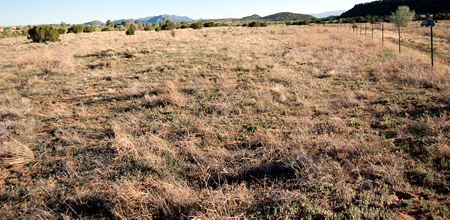
Mexican Period
Mexican Period
New Mexico changed from Spanish rule to Mexican rule in 1821, opening the territory up to merchants from the eastern United States. Residents of New Mexico had little means to pay for the very desirable goods that were now available from the east. One means the traders readily accepted was gold. In spite of the intense interest in gold on the part of the Spaniards, gold mining in New Mexico did not really take off until the governance had changed to Mexico. The Ortiz Mountains which form the western skyline of the Galisteo Basin have a wide spectrum of minerals, one of which is gold. Bill Baxter’s The Gold of the Ortiz Mountains documents the complex comings and goings of miners, speculators, and politician as well as the geology that supported these endeavors and the technologies used to extract “that soft and nearly useless metal that has so regularly tested the mettle of mankind.”
The village of Galisteo was located on a branch of the Santa Fe Trail after it became sufficiently secure from frequent native raiding, the village became well established by 1840, although raiding continued until around 1860. Lucy Lippard of Galisteo and author of Down Country: The Tano of the Galisteo Basin 1260-1782 has continued to research the history of the Galisteo Basin and its land grants subsequent to 1782. She places the founding of the Village of Galisteo at 1814, although there are other attempts preceding that date. Thus, official founding of the village just preceded the Mexican period; the village continues to be occupied and vestiges of its long history are present among occupied houses of several eras. Quoting Lucy Lippard’s Galisteo symposium paper, “At its inception the village of Galisteo probably consisted of a few low adobe buildings and jacal corrals with the strips or suertes of farmland below (suerte also means luck; land is luck). Perhaps around 1821 (it’s undocumented at the Archdiocese), the adobe church was built.”

© New Mexico Office of Archaeological Studies, a division of the New Mexico Department of Cultural Affairs.
The Center for New Mexico Archaeology
7 Old Cochiti Road
Santa Fe, NM 87507
505-476-4404
Fax: 505-476-4448

